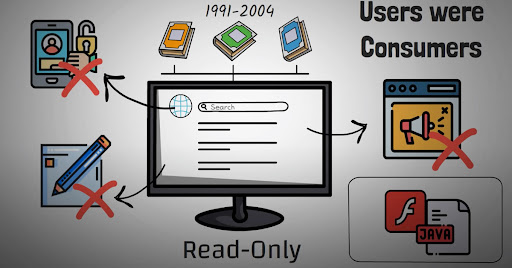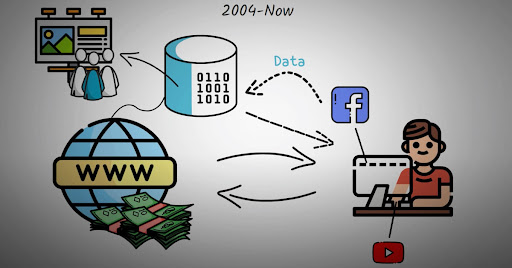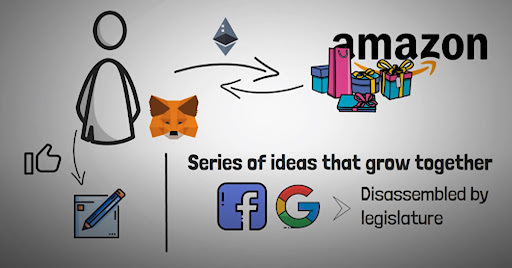 Photo credit: Greg Rakozy on Unsplash
Photo credit: Greg Rakozy on Unsplash
Over the past 30 years, the internet has evolved from a relatively simple network connecting computers to a vast global system of interconnected networks. This is where Web 3.0 comes in — an evolution of the internet that focuses on creating a more secure and decentralized system. It uses peer-to-peer networks, smart contracts, and blockchain technology to create an internet that's more transparent, fair, personalized, and decentralized than ever before.
If you're confused about what this means or how it works, don't worry! This first article delves into the evolution of the web and Web 3.0’s key features and applications. In the follow-up article, we’ll go deeper into blockchain technologies’ tools and frameworks as well as security tracks associated with Web 3.0.
Watch the clip of Full Stack Engineer Asfar Ali explaining the evolution from Web 1.0 to Web 3.0 from the first webinar in our Building Knowledge Together series.
Evolution of the Web
The internet has undergone a lot of changes since its inception. The World Wide Web or Web 1.0 was the first iteration, and it was created as a way for people to share information and communicate. It was simple and did not allow for interaction between a user and the web, but it was a start. According to Nisum Full Stack Engineer, Asfar Ali, Web 1.0 can be thought of as an encyclopedia or library where you can access a book, read the information and then, put the book back.
 Photo credit: WhiteboardCrypto
Photo credit: WhiteboardCrypto
Web 2.0 came next, and it was much more advanced than its predecessor. It provided a much richer experience for users who could now interact with content in ways that were previously impossible. Data shared on the internet is not owned nor controlled by the user and is stored in databases owned by search engines, platforms, websites, etc. This information can be monetized by parties other than the user, e.g., gain insights to produce targeted advertisements. Web 2.0 is also when social media exploded on the scene, allowing people to connect in new ways.
 Photo credit: WhiteboardCrypto
Photo credit: WhiteboardCrypto
Web 3.0 is the newest iteration of the internet, and it promises to be even more revolutionary than its predecessors. This version will allow users to interact with websites in entirely new ways — and even make use of decentralized applications (dApps). Users will have full control of their data and can also anonymize themselves as users’ digital identity is not 100% connected.
Photo credit: WhiteboardCrypto
Key Features of Web 3.0
Web 3.0 is the next evolution of the internet, and it is coming soon. The vision is to build a web where users control their data rather than being forced to rely on third parties like Facebook or Google. Listed below are a few key features of Web 3.0:
Permissionless: Anyone can create an application without having to ask permission from anyone else.
Semantic: The web will be able to understand what content means and connect that content with other relevant information on the web.
Decentralized: Applications will run on decentralized networks instead of centralized servers owned by companies like Google and Facebook, which currently have all your data stored in their servers. This would allow for better privacy and security for users, as well as more efficient processing power (since there wouldn't be any bottlenecks).
Interoperability: Data from one application can be used in another application — for example, if you wanted to use your email address from one service to log into another service (like Facebook or Twitter) instead of having multiple accounts for each service that uses email addresses as logins (like Yahoo Mail and Gmail).
Owned data: Users would retain ownership of their data and can choose who has access to their data.
Web 3.0 Applications
Web 3.0 is a new internet that will be made possible by the development of decentralized technologies and protocols that are being built right now
Important Industries in Web 3.0 Include:
Decentralized finance: The idea of having peer-to-peer transactions without an intermediary is one of the most exciting things about Web 3.0. This could mean banking without banks or lending without financial institutions — and no need for platforms like PayPal or Venmo to hold your funds hostage!
Data storage: Decentralized data storage allows users to store their data on immutable blockchains instead of a centralized server owned by a third party. This means that your personal information and documents can't be hacked or stolen — it's stored on an unchangeable public ledger that nobody owns but everyone can access and contribute to.
Gamify: Gamify refers to any application that uses gaming mechanics to motivate users and give incentives to participate in certain activities on the platform (e.g., earning tokens/stars). For example, if you're playing an online game such as World of Warcraft or Fortnite, you'll earn gold coins for killing monsters or completing quests — you can then use those gold coins to make purchases in the game.
Storage systems: IPFS (InterPlanetary File System) is a peer-to-peer distributed storage system that allows users to store and access files, websites, applications, and data in a decentralized manner. Web 3.0 is all about decentralizing the internet and IPFS is one of the foundational technologies for this new type of internet.
NFTS: NFTs are now being used to represent all kinds of assets and there are several companies that have come up with solutions to the problem of digital scarcity. One company is mirror.xyz, which has created an NFT ecosystem that allows users to create and trade unique digital assets on their platform.
Ultimately, Web 3.0 is an exciting new way for users to interact with the internet that promises to be more effective, efficient, and secure than ever before. While it's still in its early stages, as the technology continues to be developed and refined by innovators, investors, and entrepreneurs around the world, we are sure to see many new and exciting applications.
How Nisum Can Help
As the future of the internet develops, blockchain promises an array of improvements for Web 3.0 that will likely change how user data is managed, transferred, and secured. Nisum’s Blockchain Lab is an example of how we stay up to date with next-gen technology to develop the best practices and latest thinking to serve our clients. Access our free guide, "5 Questions To Ask Before Starting Your Blockchain Journey," to see if your business is ready for blockchain technology implementation. To learn more about how Nisum can help prepare your business for what's next in Web 3.0, contact us today.





